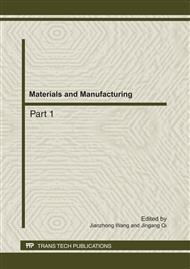p.649
p.654
p.659
p.663
p.667
p.671
p.675
p.679
p.687
Automatic Setting Control of the Raw Slurry Blending Process Based on the Case-Based Reasoning
Abstract:
Raw slurry blending process is the key process in the sintering alumina production. In this blending process, raw materials are alkali powder, red mud, blending ore and limestone, and the product is the raw slurry. The optimal operation control objective of this blending process is to make the quality indices of the raw slurry into their targeted ranges. The key step to realize this control objective is to decide the appropriate set-points of the control loop. An automatic setting control method is proposed in this paper. During the setting process, case-based reasoning is adopted to obtain the appropriate set-points of the control loops according to the process data and state. By using this setting control method, appropriate set-points can be obtained and the operation control objectives can be realized.
Info:
Periodical:
Pages:
667-670
Citation:
Online since:
July 2011
Authors:
Price:
Сopyright:
© 2011 Trans Tech Publications Ltd. All Rights Reserved
Share:
Citation:


